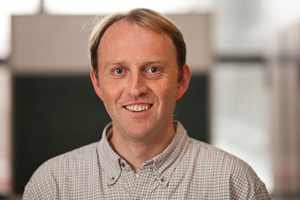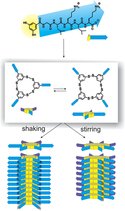Specialized iNANO Lecture: Systems Chemistry: Molecular Recognition, Catalysis and Self-Replication
Professor Sijbren Otto, University of Groningen, Centre for Systems Chemistry, Groningen, The Netherlands
Info about event
Time
Location
AUD I, Department of Chemistry, Langelandsgade 140, 8000 Aarhus C

Professor Sijbren Otto, University of Groningen, Centre for Systems Chemistry, Groningen, The NetherlandsSystems Chemistry: Molecular Recognition, Catalysis and Self-ReplicationHow the immense complexity of living organisms has arisen is one of the most intriguing questions in contemporary science. We have started to explore experimentally how organization and function can emerge from complex molecular networks in aqueous solution1. We focus on networks of molecules that can interconvert, to give mixtures that can change their composition in response to external or internal stimuli. Molecular recognition between molecules in such mixtures leads to their mutual stabilization, which drives the synthesis of more of the privileged structures2.
In this talk I will focus on two systems. The first is based on a single building block that gives rise to a small but unusually rich molecular network that can be induced to form catenanes (in the absence of any added template)2a, a self-replicator (upon seeding), a catalyst (upon addition of its substrate), a synthetic receptor (upon adding a single template) and an allosteric receptor (upon adding two separate templates).
We have observed that factors such as mechanical energy (stirring or shaking) and the presence of cosolvents can determine which replicator wins the competition for building blocks. We have also witnessed a process akin to speciation in a system made from a mixture of two building blocks.
| ||
| Host: Professor Kurt V. Gothelf, iNANO & Dept. of Chemistry, Aarhus University |


